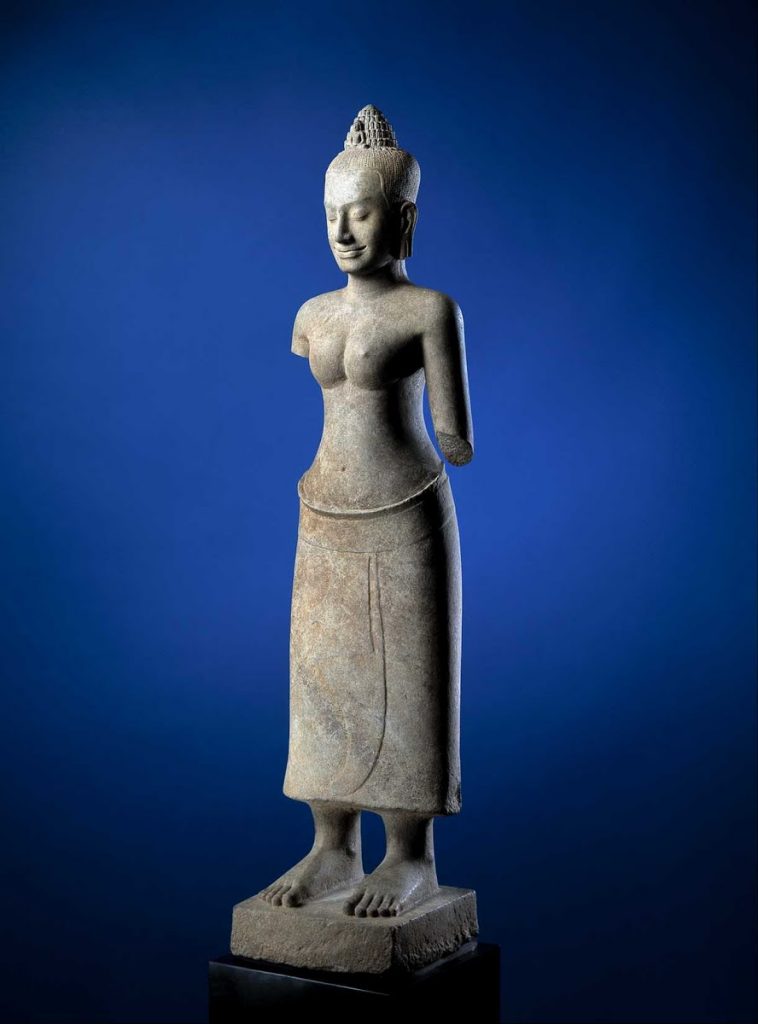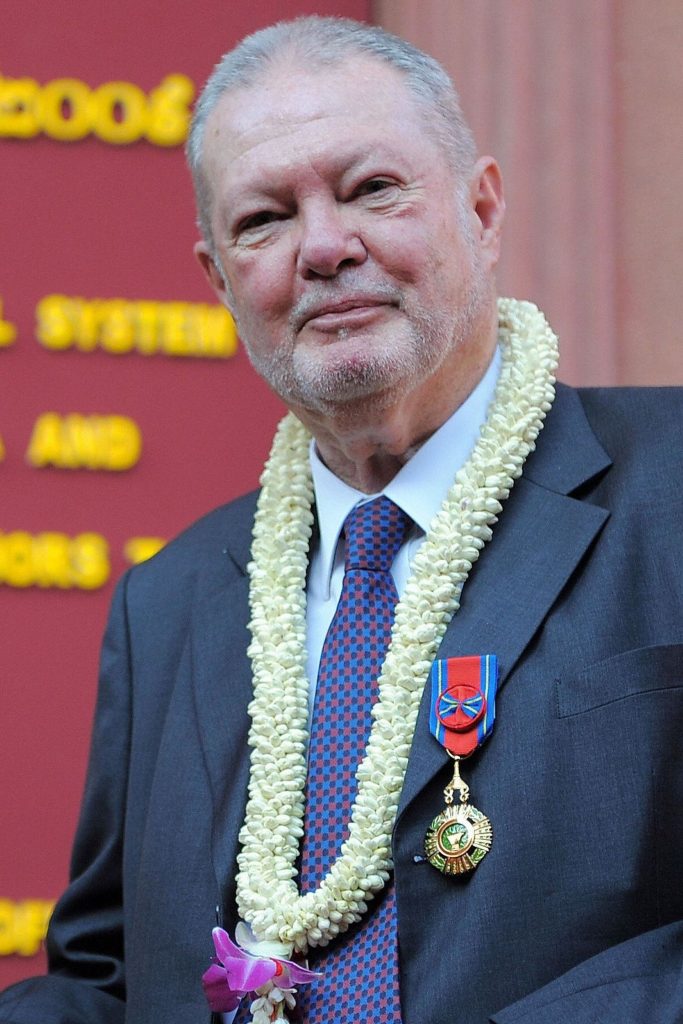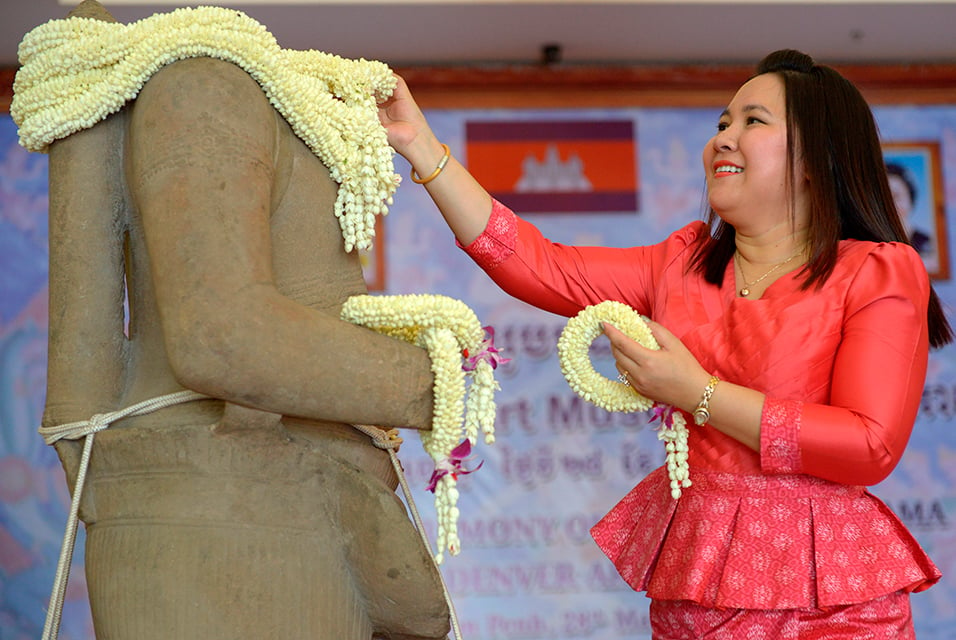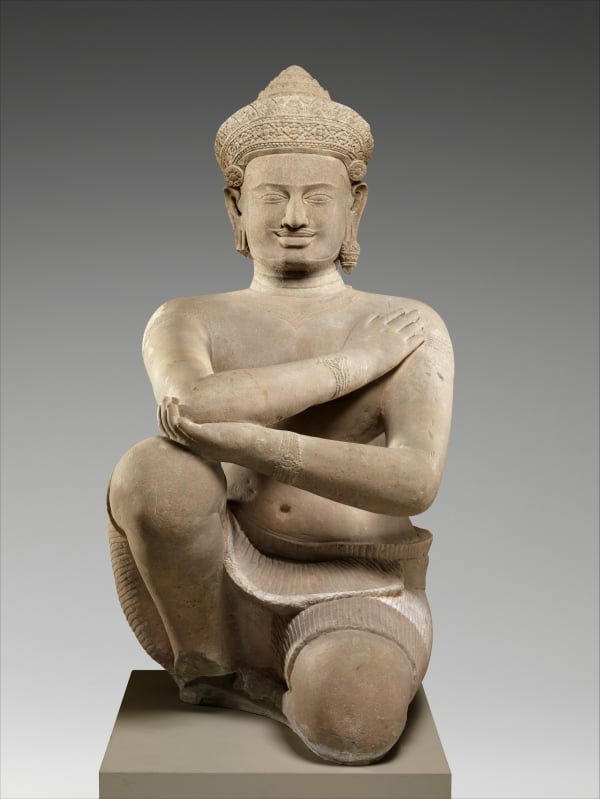Museums & Institutions
The Denver Art Museum Is Returning Four Antiquities to Cambodia After the Pandora Papers Exposed Their Illicit Origins
The objects were once owned by the late indicted art dealer Douglas Latchford.

The objects were once owned by the late indicted art dealer Douglas Latchford.

Sarah Cascone

The Denver Art Museum will restitute four Cambodian antiquities linked to the late art dealer Douglas Latchford, whose efforts to cover up the illicit origins of work in his collection were revealed in the Pandora Papers.
The Denver Art Museum is one of 10 museums in possession of works that were sold or donated by Latchford. During their investigation into Latchford’s offshore financial activities, journalists working on the massive data leak reached out to museum officials regarding objects linked to the disgraced dealer, who was indicted in 2019 for selling looted art.
The Denver museum’s ties to Latchford had been under scrutiny for years. In a statement to the Washington Post, a spokesperson said the institution had been in contact with Cambodian officials about the four objects from Cambodia since the dealer’s indictment in 2019. But it only recently began the process of actually returning them.
Two additional works in the collection that originated in Thailand—an 18th- or 19th-century cabinet and a Neolithic vessel—that also passed through Latchford’s hands are currently being researched to determine whether or not they were acquired legally. (As of press time, the Denver Art Museum had not responded to queries from Artnet News.)
In an interview with the Denver Post, Bradley J. Gordon, a lawyer for the Cambodian Ministry of Culture and Fine Arts, claimed the museum also ignored the government’s requests for records relating to the works’ provenance and ownership, reflecting a broader reticence to restitute objects to a nation that was subject to rampant looting during civil wars and unrest in the 1970s and ’80s.

British Khmer art collector Douglas Latchford during a function at the National Museum of Cambodia in Phnom Penh on June 12, 2009. Photo by Tang Chhin Sothy/AFP via Getty Images.
Latchford died in 2020, just months after the U.S. Attorney’s Office in the Southern District of New York had charged him with trafficking looted Khmer Empire artifacts from Cambodia.
New evidence of Latchford’s shady dealings was uncovered among the Pandora Papers’ 11.9 million documents, which the International Consortium of Investigative Journalists obtained from an anonymous source.
Latchford allegedly established trusts in tax havens to obscure the movement of looted antiquities. The two trusts, named after the Hindu gods Skanda and Siva, were located on the Island of Jersey, in the Channel Islands between England and France. The trusts reportedly owned Khmer treasures such as a $1.5 million looted Naga Buddha.
Latchford was first accused of having bought a pair of 10th-century warrior statues from a network of looters way back in 2012, when one of the works became the subject of a lawsuit after it was offered at Sotheby’s New York. At the time, the blog Chasing Aphrodite published a detailed list of Latchford works at the Denver Art Museum.
There are other ties between Latchford and Denver. The self-described adventurer-scholar published three books about Khmer art with Emma C. Bunker, a Colorado scholar and art professor who was a former Denver Art Museum board member. (Bunker died earlier this year.)
Latchford’s books won him renown as a scholar of Cambodian antiquities—and, prosecutors allege, provided looted objects a veneer of legitimacy that helped facilitate their sale.

A Cambodian woman places a garland around a 10th-century sandstone sculpture of the Hindu god Rama after it was returned from the Denver Art Museum on March 28, 2016.
Photo: Tang Chhin Sothy/AFP/Getty Images.
Both Latchford and Bunker were accused of providing false provenances for New York gallery owner Nancy Wiener, who was arrested in 2016 on criminal charges of conspiring to buy and sell looted antiquities from East Asia. The Denver Art Museum had announced the returned Torso of Rama, a six-foot tall 10th-century sandstone sculpture acquired from Wiener’s mother’s gallery, just days before federal authorities conducted a raid of the dealer’s business.
Latchford allegedly sold at least one artifact named in his 2019 indictment to an unidentified “Colorado museum” in 2000. That now appears to be the Denver Art Museum’s Prajnaparamita sculpture, a 12-century sandstone piece which Google Arts and Culture still notes was purchased in Bunker’s honor. (The work’s listing has been purged from the museum website.)

The Metropolitan Musem of Art repatriated two looted Khmer Kneeling Attendant statues linked to dealer Douglas Latchford in 2013. Photo courtesy of the Metropolitan Museum of Art, New York
Latchford is tied to a number of other prestigious institutions as well. There are five works he once owned at the British Museum, three at the Cleveland Museum of Art, and 12 at the Metropolitan Museum of Art in New York—down from 14, after the museum repatriated a pair of sculptures looted from the Koh Ker temple complex to Cambodia in 2013.
“The Met has long been reviewing objects that came into the collection via Douglas Latchford and his associates,” a museum spokesperson told Artnet News in an email. “The Met also has a long and well documented history of responding to claims regarding works of art, restituting objects where appropriate, being transparent about the provenance of works in the collection.”